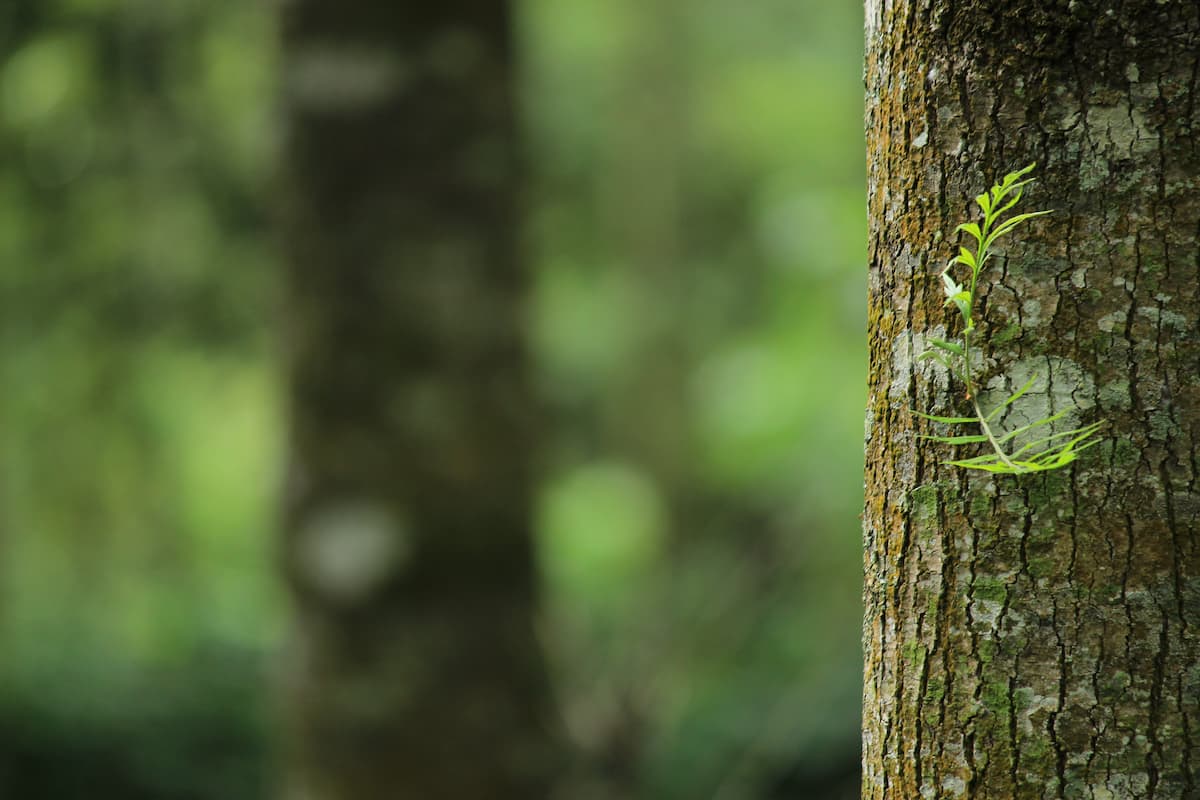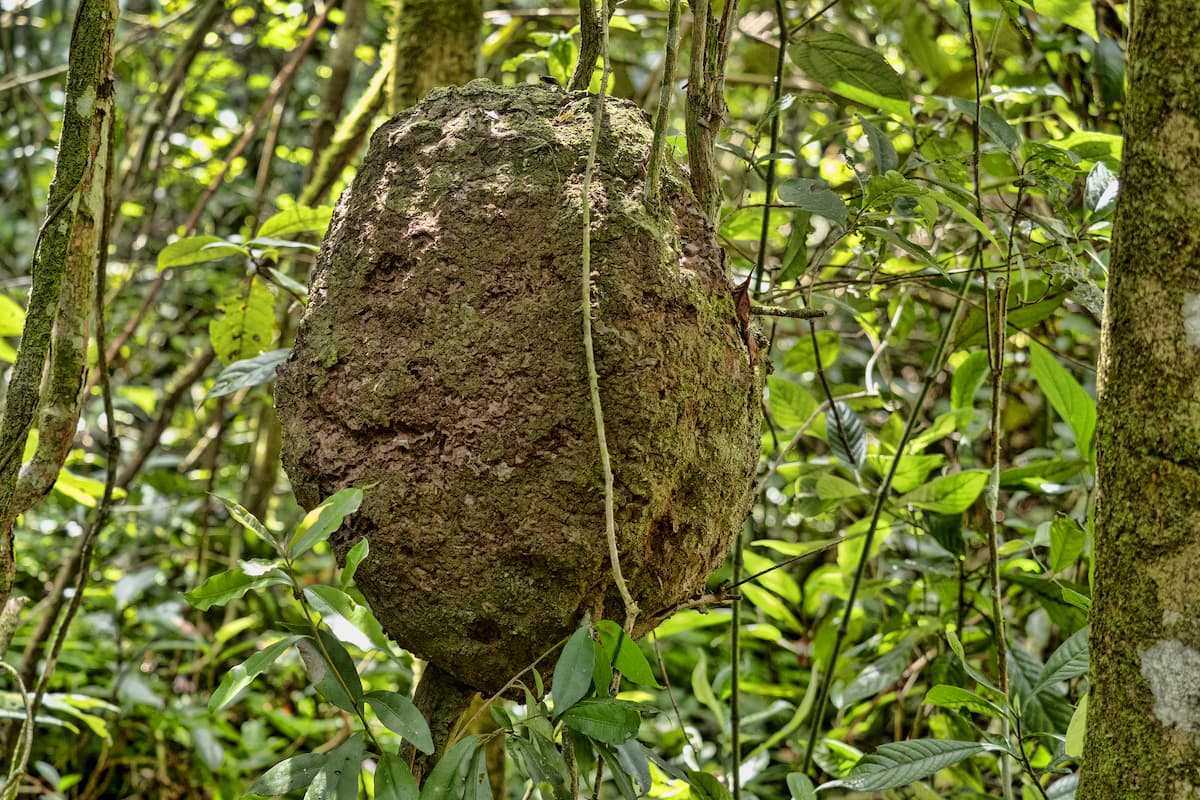How To Stop Termites From Eating Your Trees?
Termites love wood, and some species love wood from live trees in particular.
Termites eating away at the trees on your property can be annoying, and sometimes even dangerous.
So what can you do to keep termites away from your trees?
Ultimately, the best way to stop termites from eating your trees is to eliminate all of the termites from your property. In order to get rid of termites near your plants and trees, you can use insecticides or bait traps. It’s also a good idea to schedule a termite inspection with a professional so you can explore all of the available options.
4 Ways To Stop Termites From Eating Your Trees

Since termites come in a variety of species, what works for one termite colony may not for another.
However, there are some methods that can stop just about any termite species from chowing down on your trees.
1. Spray Insecticide
Insecticide spray is probably the most common method for getting rid of pests in and around your home.
And many termite insecticides, called “termiticides”, will kill all types of termites.
However, some termiticides only eliminate certain species of termites, so you’ll need to make sure you use a spray that works for the specific type of termites that have infested your trees.
You’ll also want to check that the spray you buy is safe to use on trees.
If your tree grows fruit, it’s especially important to find out if the insecticide you use is safe so that the fruit doesn’t become poisoned.
Once you determine which type of insecticide to use, spray the liquid in a complete three-foot (0.9 meters) circle around the base of the tree.
If you want even stronger protection, you can apply additional spray two feet (0.6 meters) up the trunk as well.
It’s also important to recognize that it’s ideal to have a professional expert spray your trees, because termiticide has a high chance of contaminating the groundwater on your property.
If you decide to spray your trees yourself, make sure not to spray the pesticides near any wells or waterways.
Otherwise, you could poison your area’s water system.
Finally, when using any insecticide, be sure to follow all of the instructions on the bottle, and wear protective equipment.
2. Use Nematodes
For a more natural insecticide alternative, you can also use nematodes to get rid of termites.
Nematodes are tiny creatures that typically feed on things like fungus and bacteria.
When you release nematodes into a termite nest, they will dig their way inside the termites’ bodies and release bacteria that kills the termites.
In order to use nematodes in a termite nest, you need to start by making sure you purchase the correct kind of nematodes, otherwise you could risk causing further harm to your tree.
Once you verify that you have the right kind, you can put the nematodes inside a spray bottle, add some water, and spritz the tree’s trunk and branches.
3. Set Up Termite Bait Stations
Although they can be slow-acting, termite bait stations can also be pretty effective at eliminating a termite colony.
This method works by using bait that attracts the termites to the station.
Unbeknownst to the termites, the bait contains a delayed-action poison which causes the termites to die within a few days or weeks of eating it.
Now, you may be wondering why on earth you would want an insecticide that has a delayed reaction.
Why not just use something that kills off the termites immediately?
Well, for one thing, the delayed reaction keeps the termite bodies from piling up around the bait station.
You don’t want the bodies too close to the bait station because the other termites will sense that there is danger there and avoid that area.
This is why a delayed reaction is preferred, since it causes the termites to die elsewhere, and other termites won’t become suspicious of the trap.
Furthermore, the delayed reaction gives the termites time to return to their nests, where they will spread the poison to other members of the colony as well.
Bait stations are quite easy to use too. You just need to stick a few into the ground about one to two feet (0.3-0.6 meters) from the base of the affected tree.
4. Cut Off And Burn Infested Branches
Removing termite-infested branches will not get rid of your entire infestation, but it can help reduce the number of termites eating your tree.
So, go ahead and cut off the branches that have the worst infestation.
Remember that when you remove tree branches, don’t cut off too many, or you could kill your whole tree.
After cutting off the infested branches, place them directly into an outdoor fire so you kill the termites.
If you don’t burn the branches, the termites will either migrate back to the same tree or to other nearby plants.
How Can a Termite Inspection Help Me Save My Trees?
During a termite inspection, a professional will examine your property to determine if there is a termite infestation, and if so, what kind of termites you have.
These inspections will not only help you figure out if you do indeed have a termite infestation, but a trained expert who performs the inspection can also give you tips on how to protect your trees.
Additionally, an expert will also be able to identify the species of termite you have, which can help you decide how best to treat your infestation.
How Much Does a Termite Inspection Cost?
In the United States, you can expect to pay around $100 for a termite inspection.
However, the price will depend on which company you hire and where you live.
Typically though, you shouldn’t pay more than $250 (or less than $50) for a single inspection.
Is A Termite-Infested Tree Dangerous?

A termite-infested tree could be potentially dangerous, depending on how damaged it is, and where it is on your property.
A tree that has been devastated by termites will eventually fall over, or at least lose large branches.
If the infested trees are near a home or barn, they can easily crush any people or animals inside the building.
In some cases, falling trees can even lead to death.
So, if you have a termite-infested tree on your property that could potentially fall and cause harm to any people, animals, or structures, it’s crucial to take care of the termite problem as quickly as possible.
Doing so should prevent any further damage, and will likely save your tree.
How Can I Tell If A Termite-Infested Tree Is Dangerous?
The best way to tell if a tree is dangerous is to have it inspected by a professional arborist.
These professionals can spot any signs that a tree is close to falling over, or that large branches are in danger of falling off.
You can also inspect the tree yourself, but remember that this option is riskier.
Signs that a tree is in danger of causing damage include:
- A leaning trunk
- Several and/or large dead branches
- Deep cracks in the trunk or large branches
- A lot of decay
If you notice any of these signs, you should have the tree cut or removed.
What If Termites Have Infested A Tree Stump?
If you have a tree stump that has been infested by termites, you need to take action to eradicate the situation so that they don’t migrate to other trees or plants on your property.
Conclusion
The best way to stop termites from eating your trees is to eliminate them.
And the easiest way to get rid of termites is by treating the tree with insecticides, or by using termite bait stations or nematodes.
